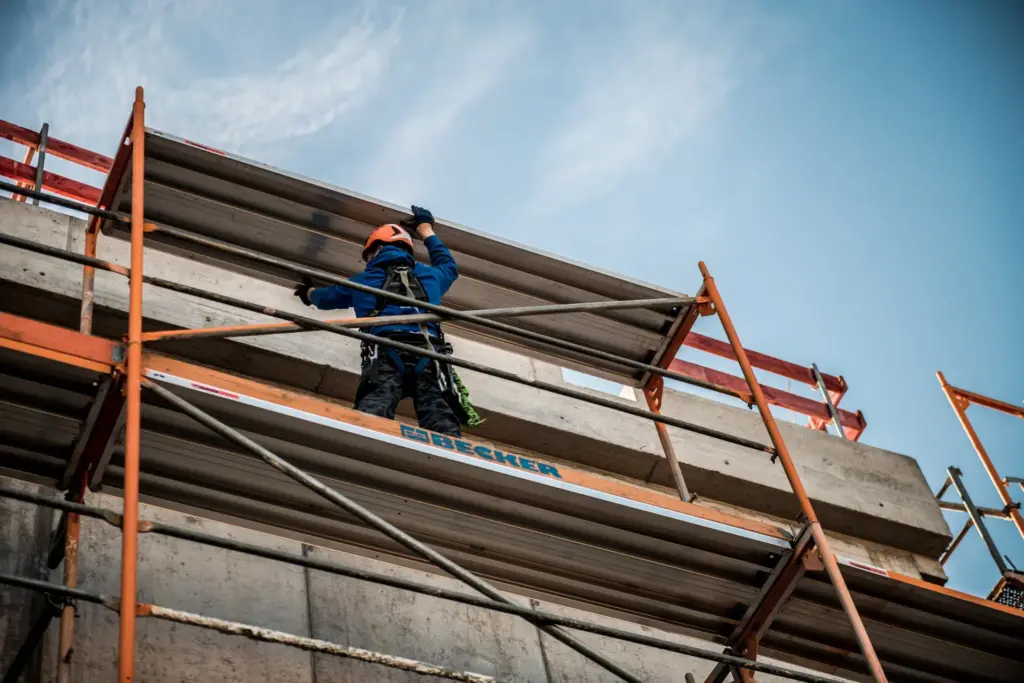


Scaffolding on uneven grounds needs careful attention and installation to reduce safety concerns and prevent accidental hazards. It is possible to erect scaffolding on uneven ground. but special measures must be taken in the planning and construction phase to make it possible. Adjustable components are used in this type of scaffolding to make it erect properly on uneven ground.
Scaffolding Installation on Uneven Ground
On bumpy or uneven grounds, you have to use adjustable or adaptable components to prevent accidental falls or other hazards. Scaffolding experts can easily do this by using proper tools and equipment. An example of such a scaffolding system is tube-and-clamp scaffolds.
The legs of the scaffolds are made adjustable to support the overall structure on bumpy ground. The adjustable legs make it possible to make the working platform safe and reduce the risk of accidents.
Scaffolding on uneven ground can be very challenging and dangerous as well. Therefore, it is always recommended to take the help of scaffolding experts who can erect the structure properly and safely. At Norwich Scaffolding, we offer the best services for commercial, industrial, and residential scaffolding. Contact us today for a safer and more efficient scaffolding solution.
Types of Uneven Ground
There are different types of uneven grounds on which you may need to work. Examples of uneven grounds are described below:
Grass Surface
Grass is an uneven surface and erecting a scaffold on grass is as difficult as on any other bumpy surface. However, it is not impossible to use scaffolding on grass. It needs careful consideration during the planning and building phase to make changes in the working platform accordingly. On any soft ground like grass, it is suggested to place wood planks under the base or base jacks under each leg of the scaffold to provide a level surface.
Slope Surface
On sloped surfaces, scaffolding can be used with the help of adjustable legs and other adaptable components. These adjustable and adaptable equipment help to level out the scaffolding so that it may not destabilize during use. Slope surfaces are more dangerous to use therefore, you must provide a leveled surface for the platform to avoid risks and hazards.
Scaffolding Installation Steps for Uneven Ground
The following steps should be followed while installing it on uneven ground.
- Use a scaffolding frame with casters or base plates. This is recommended because it will help to make the frame firmer and prevent damage to frame tubes.
- Besides using the base plates, it is also important to level the ground first. It can be done through various methods like leveling the grass, adding wood planks, or putting an adjustable base jack under each leg.
- Make sure to use adjustable components like adjustable legs. This will help to keep the working platform firm even on slopes.
- When the scaffolding is erected, move it to the required position and make sure to put a block on the base plate.
- Finally, make height adjustments accordingly.
Suggested Scaffolding Height for Uneven Ground
The higher the scaffolding, the more risky it is to work on it, especially when the scaffolding is erected on uneven ground. Therefore, different height standards are given so there is less risk of falling.
- The height of scaffolding from the base or ground is suggested to be 4 feet.
- The height of the scaffolding’s first level is 6 feet from the base.
- This becomes a total height of 10 feet above the ground. People working at a height of 10 feet or more should consider the downfall of safety measures.
- According to scaffolding experts, the next levels should be installed with fixed height gaps in between. For example, the second level of scaffolding will be 16 feet high from the ground if you follow the fixed gap rule.
- The width of the primary platform setup should be at least 5 feet. It can be increased according to the construction needs and requirements.
Attach with the Building to Minimize Risks
Even in the case of scaffolding on plain surfaces, they are mostly attached to the building to help support the structure and make it more firmly stand on the ground. Especially when the scaffold is very large and placed for a long term, it is attached to the building.
Conclusion
In case of uneven ground, the expert scaffolders suggest that the working platform should always be attached to the building or the ground. This will not only help to support the structure but also help to minimize the risk factor. Hire a Scaffolding company in Norwich to minimize the associated risks.
